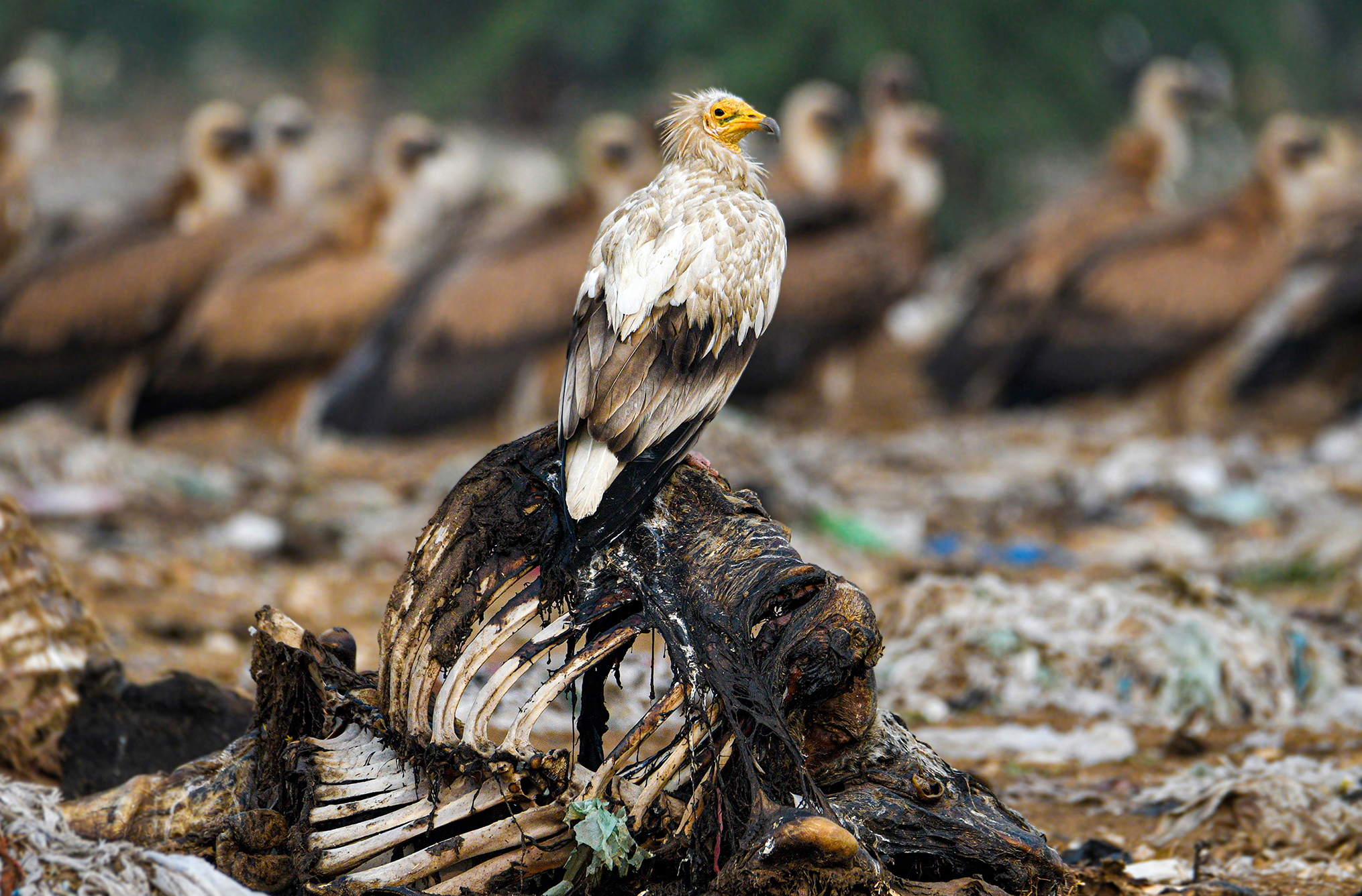I went on a quest to photograph the last of the vultures
Prasenjit Dutta offers a lament for a disappearing species, highlighting his commitment to conservation and nature education

This project is about mourning for vultures as a declining species. I had heard many proverbs about vultures, such as 'Vultures always eye the garbage dump', or 'No matter how high a vulture flies, it always looks downwards' and one my grandmother used to say, 'A vulture hovering over our heads signals plenty of troubles ahead'. But I never imagined I would one day embark on a journey to see these birds up close.
To observe these majestic yet misunderstood creatures, I went to Bikaner in the province of Rajasthan, India. I was inspired to photograph them to prove that people's prejudices about the species were wrong.
Our destination was Jorbeer, home to a vulture sanctuary and a feeding area. As we traveled through the desert landscape in an open-roofed jeep, we spotted a signboard that read 'Feeding Place'. Our guide, Dr Jitu Solanki, laughed and said, "Not humans – this is the feeding place for vultures!"
As we explored the Jorbeer Conservation Reserve, we learned that it’s a dumping ground for animal carcasses from surrounding villages. The area is almost barren, with a few ghaf plants and toothbrush trees scattered around. We saw an Egyptian vulture sitting on the ground and the guide told us about the ancient Egyptian civilization’s reverence for these birds. I was surprised to see the Egyptian vulture sitting on an animal skeleton. The bird looked like an angry Scavenger King. Near him sat the Eurasian griffon vulture, as if they were loyal to the Egyptian vulture.
We learned about the decline of vulture populations due to diclofenac, a non-steroidal anti-inflammatory drug that was widely used to treat cattle. The drug was banned in 2006, but that decision came too late for many vulture species. Vultures are not just birds; they are an example of how human greed and civilization can lead to the extinction of an entire species. They are also a reminder of the importance of conservation and sustainable habitats.
As I reflect on my journey, I realize that the life of vultures is a sorrowful one. They were once a common sight in our cities and villages, but now they are almost extinct. Let us hope that future generations will have the opportunity to witness these magnificent creatures – otherwise, they will remain only as a carved image in human civilization.
Tech details

Camera: Nikon D7500
Lens: Nikkor 200-500mm F/5.6E ED VR
Aperture: f/6.3
Shutter Speed: 1/5000 sec.
ISO: 1250
Get the Digital Camera World Newsletter
The best camera deals, reviews, product advice, and unmissable photography news, direct to your inbox!

Based in Kolkata, India, Prasenjit Dutta is a wildlife photographer specializing in birds, including vultures, developing a unique perspective on these fascinating creatures. Prasenjit is the author of the book Mrito Shahar-er Pakhi (Bird of the Dead Shahar), published by Hawakal Publishers, which highlights his commitment to conservation and nature education.
This article originally appeared in Digital Photographer, a monthly magazine, and the kitbag essential for pros, enthusiasts and amateurs alike!
Inside, you'll find practical guides, shooting tips and techniques from working photographers, plus all the latest industry news.

Kim is the Staff Writer on Digital Camera World, and formerly Technique Editor at Digital Photographer, focusing on the art and science of photography. With a Master’s degree in Photography and Media, she is driven to educate through an analytical approach, visually and technically. With her guides and tutorials, Kim seeks to uncover new facets of this time-honoured medium and foster a deeper understanding of its profound role in culture. Kim highlights topics that resonate with modern society, including women in photography and critical issues such as environmental conservation. She also discusses and reviews camera gear, giving you an overview to find the best fit for your photography journey.

